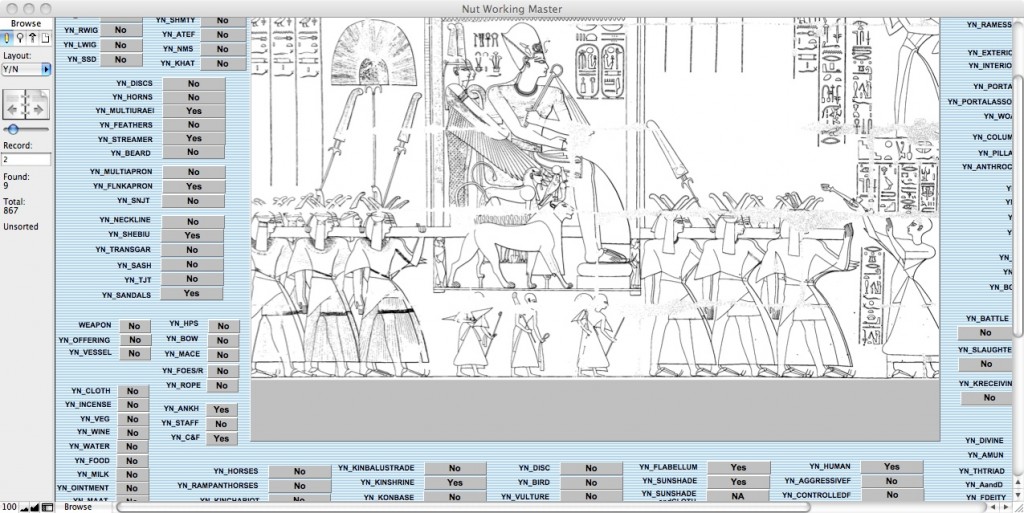Brian Hunt (his excellent blog can be found at http://brianvhunt.com/) asked very insightful questions in response to an earlier post on a frequency analysis of Medinet Habu. His questions were important enough to warrant a post of its own, particularly since they clearly pointed out the immense value of collaboration. Brian had two questions. The easiest to answer was whether or not the database included a full breakdown of deities. The current version of the database provides the ability to identify the presence of certain deities, but they are not all separated out since they were not my primary focus in the dissertation project that Art of Counting developed from. This ability will be a part of the next iteration of the database, which is currently under development. This next version will permit the user to search for individual deities, combinations of deities, and ‘merged’ deities (such as Amun-Re-Kamutef).
Brian’s second question was a bit more complicated to answer. He was curious as to how many times the king presents an offering to one god with another deity standing behind him. This question immediately made it clear that a new variable needed to be included in the next version of the database that will allow such scenes to be instantly identified.
Adding this deity-based tracking variable will be a simple matter; it was just an element that I had not yet begun tracking and had not thought about. This is one reason why I am actively seeking collaborators for this project—one person simply cannot think of everything we need to track. The more knowledgeable eyes I can get on the variable list for the next version of the database, the better! It is infinitely easier to include ALL desired elements in the initial design than it is to add elements later.
In order to answer Brian’s second question (the number of scenes where the king is offering and has a deity behind him), I had to perform the somewhat ‘brute-force’ task of visually examining all offering scenes. However, even in performing this task, having all the scenes captured in the database showed its massive value. Rather than the far more intensive method that would have been necessary previously—scanning all the plates in the Oriental Institute Medinet Habu epigraphic survey volumes—I was able to easily narrow my search by choosing the ‘king offering’ variable to select the 523 such scenes. Since the database includes a large image of the scene in question, it made a visual examination of even this number of plates a relatively quick process.
In less than a half hour, I was able to determine that there are 33 offering scenes at Medinet Habu where the king has another deity standing behind him. Fifteen of these are located on columns in the second courtyard, two are found in the western portico in the second courtyard, and three appear on the East High Gate. The remainder is found within the temple proper. The deity behind the king is often Thoth, but Seshat, Isis, Hathor, Mut, Khonsu, and Weret-Hekau also appear in this position.
Thanks to Brian’s insightful questions, a new variable ‘deity behind king‘, will be added to the database. Once the data is entered for this new variable, I would be able to answer any question about those scenes within seconds.




I found your site via yahoo, thanks for the post. I will save it for future reference. Thanks!
I am not a person who is easily delighted but I have to say your work blew me away. So much ideas and relevant details that you put into it made me see your point of view. Thanks for communicating your reasonable inputs.